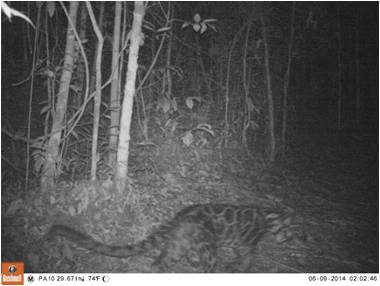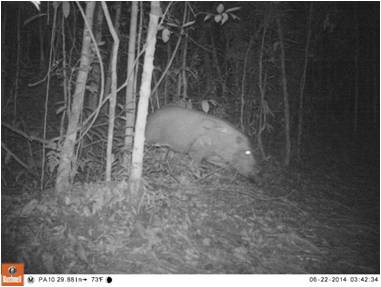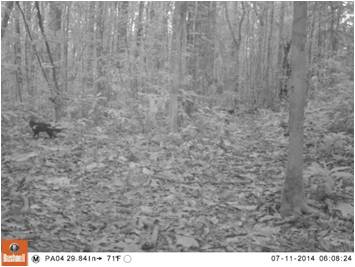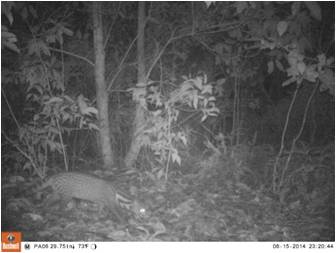This year the Foundation received a grant from the Rufford Foundation for a Camera Trap Programme at Pondok Ambung. This is an important development, as this research site is within the Tanjung Puting National Park (protected since 1982). Foundation staff have helped protect the park and the site since 1998. With this duration of protection, the park and its biodiversity has remained mostly undisturbed – a pristine forest in Central Kalimantan, Indonesian Borneo. The Foundation has hosted many students at Pondok Ambung - a chance for Indonesian students to conduct biodiversity research. Now with these cameras, we can catch a glimpse into more elusive wildlife...
Earlier this year, 10 camera traps were installed within the research site. The Foundation ensured there was no human activity in the study area for two months before the camera traps were installed. This lack of disturbance encourages more animals to travel past the camera traps. Foundation staff carefully selected the positions for the traps, and our hard work paid off!
Just one month after the camera traps were set up, we are excited to see the first collection of photos... as well as those shown below, we also have seen crestless fireback (Lophura erythrophthalma), lesser mouse deer (Tragulus javanicus), Bornean red muntjac (Muntiacus muntjac), pig-tailed macaque (Macaca nemestrina) and the Malayan porcupine (Hystrix brachyura)!
To get a snap shot into the lives of these rare and endangered species is truly special and important. Many of these creatures may be more endangered than currently listed (on IUCN Redlist – click here), so knowing where different species roam, and estimates of population size, are crucial.
It's fantastic to see this much biodiversity within 30 days. In this location, there is much potential for further scientific analysis. We look forward to future results - who knows what else we will see! To support the Foundation’s scientific research and the protection of orangutan habitat, please donate here or get in touch!








